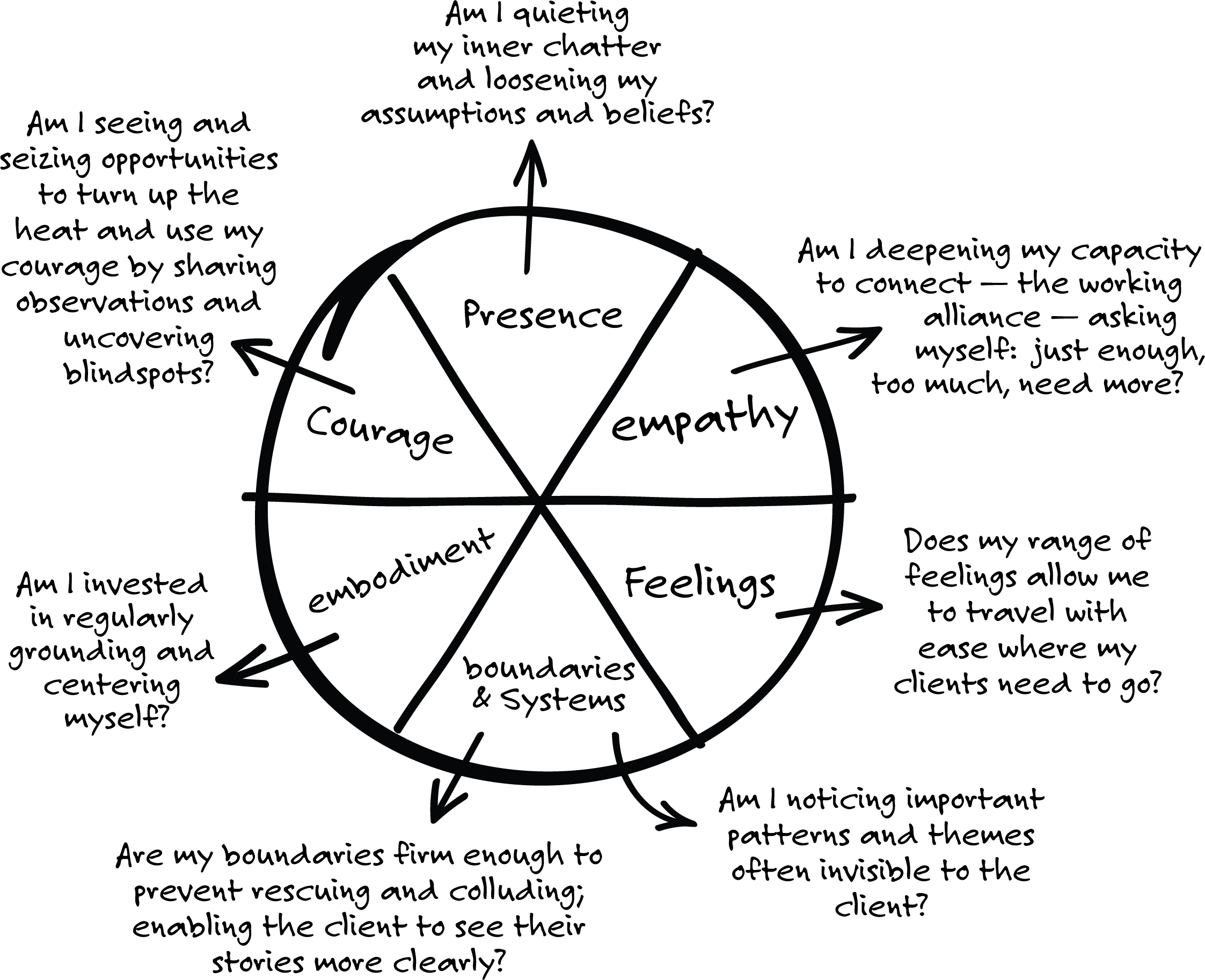Self As Coach, Self as Leader
The first two lines on the book jacket of Pamela McLean’s new book, Self as Coach, Self as Leader: Developing the Best in You to Develop the Best in Others pulled me in:
The best coaches are leaders.
The best leaders are coaches.
Yes!
Coaching and leading are so intertwined and important. Coaching is now a multi-billion-dollar business globally, and all leaders should learn to be great coaches.
Pamela is the CEO and co-founder of the Hudson Institute of Coaching, providing the highest-quality coach training to leaders worldwide.
How does a leader cultivate self-awareness?
This continual cultivation of self takes practice, a regular reflection practice that we build into our daily life. What’s more, inward focused self-awareness alone is insufficient. We gain more awareness of how we are experienced by others when we seek and welcome feedback on a regular basis.
I often refer to this as cultivating our internal landscape – noticing what is happening in our thoughts and emotions, paying attention to our biases and assumptions, becoming attuned to feelings, bodily sensations and urges and inclinations that arise.
Focus on Personal Development
Many corporate leaders think they need to focus exclusively on the bottom line. How do you convince them to tune in to the aspects of personal development?
It’s all connected –the culture, the ability to retain great talent, the goal of being a great place to work and the leader’s self-awareness and well cultivated internal landscape.
Today we know that a leader who is distant, disconnected and out of touch with her people is not a leader who others will follow! Empathy matters in our work and leaders able to access and express empathy create connections with their people engendering a sense of caring about and valuing others. The well-known phrase ‘culture eats strategy’ is all too true. Great strategy is never sufficient, and culture starts at the top expressed in every conversation a leader has with others.
What distinguishes or describes a leader who is walking the walk?
A leader who exhibits humility and a growthful mindset is a leader who models for others their commitment to continually develop, a leader who is regularly seeking feedback and input from others and a leader with willingness to help others grow by offering developmental feedback delivered with heart and empathy.
Humility is a distinguishing feature of a great leader combined with an ability to connect well and inspire, to demonstrate in-the-moment presence and curiosity, and to demonstrate courage with heart.

Use the Six Dimensions
How does a leader best use the six dimensions to coach someone?
Some aspects of the six dimensions are present in how we show up as coach or leader in all of our work and others are at various times more or less dominant, based upon the unique dynamics of a situation.
Presence is the home base for all of us. Am I present in this moment? Am I managing my assumptions and biases that might limit my presence? Am I able to put my preoccupations on hold to be fully here in this conversation? Am I attuned to what is uniquely showing up in this conversation? Our ability to rapidly scan and get ourselves present in-the-moment is a game changer whether a leader or a coach.
Empathy is King. Am I connected? How do I demonstrate this – eye contact, warmth, through full presence, an expression of caring. If empathy is not accessed, the quality of any conversation is altered and diminished. The other does not ‘feel seen’ or ‘safe.’ If empathy is overdone it can get in the way of the most important conversation coming forward. In short, a balanced empathic connection is the goal for all of us.
Feelings are Human! Am I able to hold a space for the feelings of another to emerge without sending a non-verbal or verbal message to ‘stop feeling’? So often it is the discomfort of the leader or coach that can shut down the expression of feelings and, yet, feelings are an important part of our humanness and often the door to the most important conversations.
Boundaries help us stay out of another’s story and instead help the other to see their patterns and stories — this is important for the coach and the leader.
Develop Healthy Boundaries
Of the six, let’s talk about one in particular. Boundaries. What do healthy versus unhealthy boundaries look like?
Boundaries allow us, as coaches, to help someone notice and make meaning of their situation instead of leaping in to rescue or collude with the coachee. Imagine the coachee who arrives angry and blaming his boss for what has unfolded; or someone who arrives feeling very anxious and in quite a crisis because of an unexpected lay off, needs to secure another position rapidly and wants the coach to help solve the situation. Depending upon how the coach is ‘wired’ it can be tempting to want to rescue the coachee or collude with their interpretation of a situation in order to be liked or to seemingly comfort the coachee. In either case – colluding or rescuing – the coach finds herself drawn into the coachee’s story and in so doing, loses the capacity to be of true value to the coachee.
This boundary dynamic is at play for the leader as well, as it often confounds the important work of developing others. Imagine the leader who chooses to continually ‘come to the rescue’ of a member of her team instead of coaching the team member to develop strong skills so they need no rescuing!
Good boundaries allow a leader or a coach to do their best work with others; while wobbly, porous boundaries prompt us to ‘roll up our sleeves’ and get in the other’s business instead of taking the opportunity to learn, to develop and to courageously observe a pattern at play. Helping another see and explore their stories and patterns is an important way we help others grow.
Do you have any success stories you can share where the six dimensions have changed someone for the better or impacted their leadership?
 I worked with a talented physician leader who was fiercely committed to being at her best with her people and for her organization. In our work together she was humble, constantly engaged in new learning and willing to consider the feedback of others. And yet, she was the first to admit she was so often in a rush and her busy schedule led her to be quite directive and seldom did she find time to be very curious about how her approach landed for her senior team. Over the course of a few months of our work together she began to change her approach – she started with her presence, slowing down, asking more than telling, and building a stronger connection with every member of her team. I’ll long remember her reflecting – with tears in her eyes – that for years she believed she knew how she was perceived and what her leaders wanted and needed from her and the organization – in fact, she found as she developed a new way of leading that she had been out of touch with her people – she was profoundly humbled by this awareness and her exact words at the conclusion of our work were, “I learned that what I’ve always thought of as ‘soft skills’ are actually the hardest and the most important!”
I worked with a talented physician leader who was fiercely committed to being at her best with her people and for her organization. In our work together she was humble, constantly engaged in new learning and willing to consider the feedback of others. And yet, she was the first to admit she was so often in a rush and her busy schedule led her to be quite directive and seldom did she find time to be very curious about how her approach landed for her senior team. Over the course of a few months of our work together she began to change her approach – she started with her presence, slowing down, asking more than telling, and building a stronger connection with every member of her team. I’ll long remember her reflecting – with tears in her eyes – that for years she believed she knew how she was perceived and what her leaders wanted and needed from her and the organization – in fact, she found as she developed a new way of leading that she had been out of touch with her people – she was profoundly humbled by this awareness and her exact words at the conclusion of our work were, “I learned that what I’ve always thought of as ‘soft skills’ are actually the hardest and the most important!”
For more information see Self as Coach, Self as Leader: Developing the Best in You to Develop the Best in Others.

